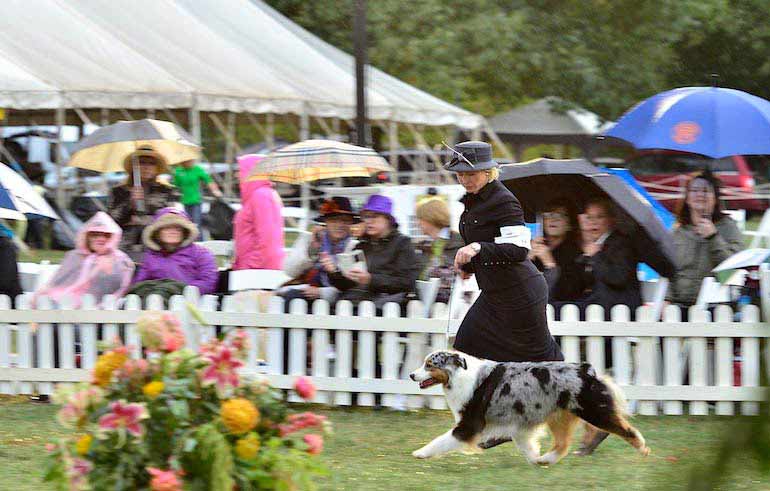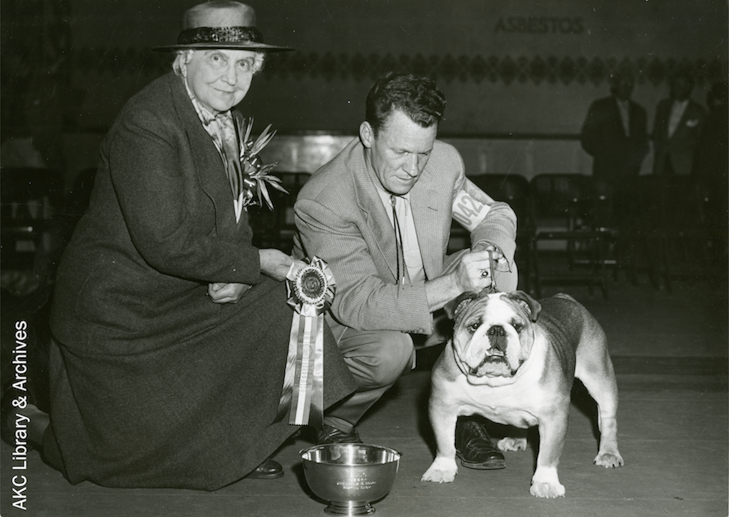
We all want what we can’t have, and topping that wish list is a simple – if improbable – ask:
Immortality, please.
As no one has yet managed to live forever, the next best thing is keeping your legacy flickering long after your mortal candle has sputtered. This goal is often best accomplished with money – and plenty of it. That, at the least, lets you attach your name to lots of impressive-looking buildings.
But while brick and mortar are quite durable, they are also inevitably impersonal. What good are foot-tall letters if they evoke no emotion or appreciation? Perhaps better to have accomplished something less tangible, but that still has meaning and continuity into the present day.
For most of the 20th century in the world of dogs, the name Geraldine Rockefeller Dodge needed no further explanation. Born in 1882 into one of America’s wealthiest families – that would be the “R” name in her pedigree – the Standard Oil heiress became the richest woman in America when she merged her immense personal fortune – estimated at $100 million at the time, or just a bit north of $2.7 billion in today’s dollars – with that of her husband, Marcellus Hartley Dodge Sr., scion of the Remington firearms company.
“The Godmother of Dogdom”
“Ma Dodge,” as she was affectionately known in dog show circles, had an impact on dogs that still reverberates today. At Giralda Farms, her country estate in New Jersey, she housed up to 150 dogs of more than 80 different breeds, spending $55,000 a year on meat alone to feed them. In 1936, at a time when most show dogs were shipped from venue to venue via railway, Mrs. Dodge’s were transported in a retrofitted Cadillac Fleetwood. That vehicle, boasting 10 doors, was capable of transporting a dozen dogs. The transformation took three men three years to complete.
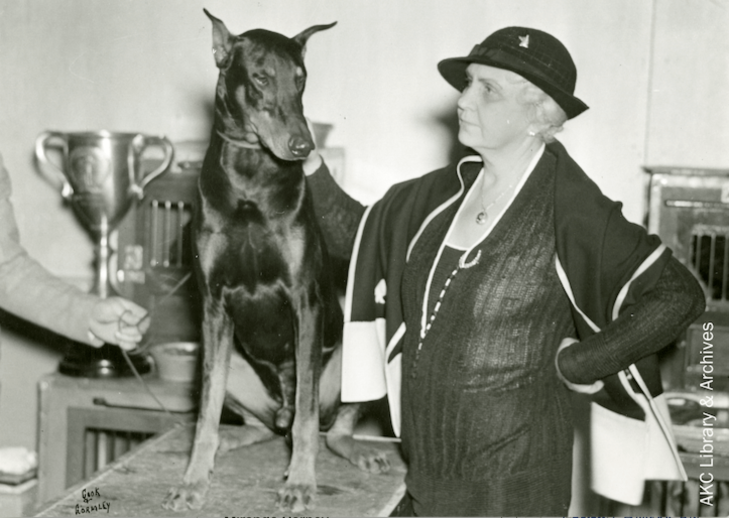
Mrs. Dodge’s interest in a breed sometimes changed it forever. Her involvement in English Cocker Spaniels led to the then-two varieties of Cockers becoming distinct breeds, a case she made in her 1942 book, “The English Cocker Spaniel in America.” Particularly fond of German breeds – her involvement in German Shepherd Dogs and Doberman Pinschers was quite extensive – Mrs. Dodge also took an interest in Rottweilers, helping establish the breed here. Acquiring only the best dogs from every corner of the globe, she finished more than 180 champions and was the owner of 200 different dogs that went Best in Show, two of them at Westminster.
Speaking of that world-famous New York City show, Mrs. Dodge was the first woman to judge Best in Show there as a solo judge, in 1933. In previous years, when multi-judge panels were the norm, Mrs. R.F. Mayhew had the distinction of being the show’s first-ever female BIS judge, in 1928, although she was only one voice out of four.
However, the show Mrs. Dodge was most closely associated with – and the one that brings us to the intimations of immortality that started this story – was her very own.
The Marvelous Morris & Essex
In 1927, the Morris & Essex Kennel Club – founded and singlehandedly run by Mrs. Dodge – held its first dog show on the polo fields of Giralda Farms. It became an annual ritual that was repeated every year until 1957, with the exception of the wartime years of 1941 to 1945.
Morris & Essex was, quite simply, a dog show the likes of which had never been seen before, nor since. Arthur Frederick Jones, the former editor of the AKC Gazette, called it “a ‘Tiffany setting’ for purebred dogs.” No expense was spared, from the sterling-silver trophies to the elaborate floral arrangements to the formal dinner in the judges’ tent, served on fine china and crystal by white-gloved staff. The show had its own small field hospital with a doctor and two nurses, a press building with a dozen telegraph operators to transmit reporters’ stories, and just as many telephone booths with special long-distance operators.
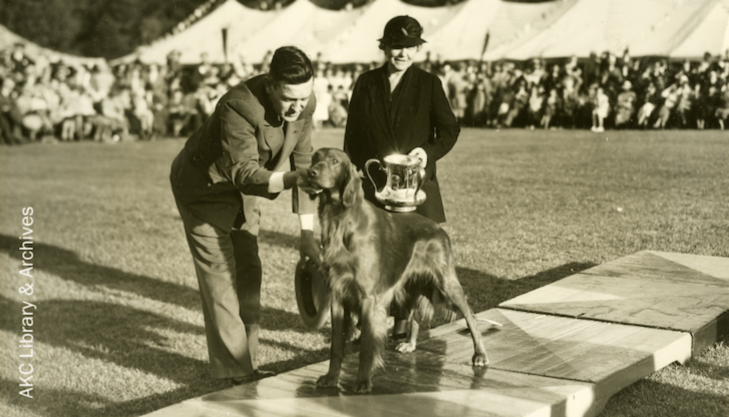
Because Morris & Essex was Mrs. Dodge’s show, she opened it up only to those breeds in which she interested, and she spared no expense in attracting world-class experts to judge them. For GSDs in 1930, for example, she invited none other than Max von Stephanitz, the man credited with creating the modern breed.
In 1939, Morris & Essex logged the largest single-day entry ever recorded for a dog show: 4,456 dogs. The human attendance numbers were equally staggering. A third of New Jersey’s state police had to be mobilized to manage the traffic occasioned by the convergence of 50,000 spectators eager to see some of the 83 breeds being exhibited.
But Morris & Essex was dubbed “the Exhibitor’s Show” for good reason. The fancy appreciated the deep quality of the event, from the caliber of judging to the old-money ambiance, not to mention the free box lunch that was provided for each exhibitor. As with Westminster, prestige-minded breeders held back their most promising prospects to finish at Mrs. Dodge’s show. Its raised wooden platforms were the battleground for many a top-winning rival.
Such was Mrs. Dodge’s dedication to the show that every year she herself presented the Best in Show trophy, with the exception of 1953, when she took a bad fall after lunch. She nonetheless returned from the hospital to see the final judging, watching intently from her new wheelchair.
A Lifelong Dedication to Dogs
In 1958, Mrs. Dodge announced that there would be no show that year, nor any year thereafter. Persistent rumors held that she had had a dust-up over scheduling the show, but the truth was far more prosaic. American life had begun to acquire a faster, more modern rhythm, and Mrs. Dodge simply could not find the 800 workers required to mount such a demanding event. Instead, she turned her attention to needy local dogs, establishing the nearby St. Hubert’s Animal Welfare Center, which continues its rescue work to this day.
In her later years, Mrs. Dodge became enfeebled and something of a recluse, never leaving her Giralda Farms. After her death in 1973, its polo fields again hosted billowing white tents. This time, though, it was for auctions of some of her world-class art collection, much of it bronzes and oil paintings depicting the many breeds she loved.
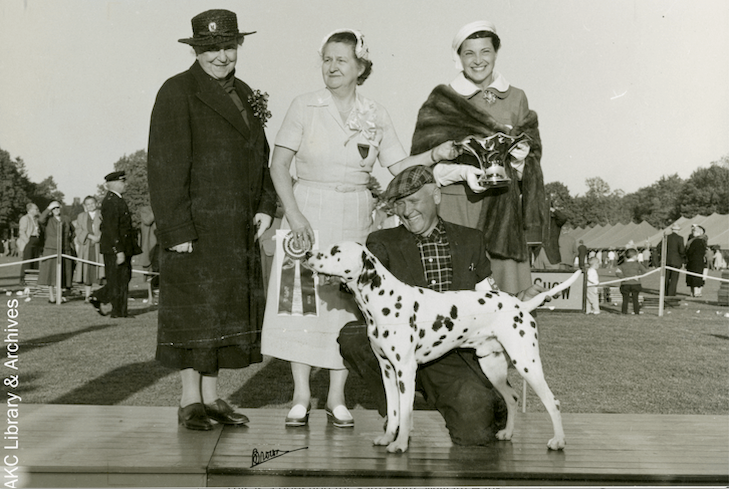
More than a quarter-century later, however, Mrs. Dodge’s famous show came back to life. Long-time fancier Wayne Ferguson – who joined the board of St. Hubert’s and found a forgotten trove of Morris & Essex memorabilia in its attic – was determined to rekindle Mrs. Dodge’s legacy by re-forming her club and resurrecting the show, which returned in 2000.
As much as possible, the new Morris & Essex replicates the original, right down to the much-appreciated box lunches and signature blue-and-orange flags fluttering above the tents, which stretch for a third of a mile. Embracing this throwback to a gentler time, exhibitors and judges alike dress in the vintage style of the era.
The Modern Morris & Essex
The expense and effort required to put on the revived Morris & Essex is such that the show can be held only once every five years. The next one is right around the corner, on October 1, 2020.
In its day, Mrs. Dodge’s show was world-famous because it was so anticipated, so unique, and so ephemeral.
“I was disappointed that you could not attend M&E this year, as it was one of the best shows we ever had,” Mrs. Dodge wrote to fellow judge Anna Katherine Nicholas in 1953. “The weather was perfect, the foliage particularly lush, and the field never looked better.”
Those brief lines in a long-ago letter sum up the allure of Morris & Essex even to this day. Mrs. Dodge had such a masterful connection to the show that no detail, even the greenery, escaped her attention. The modern reincarnation, held in the same spirit and without question among the most prestigious and luxurious in the country, if not the world, aspires to that same perfectionism.
So glad to have you back, Mrs. Dodge.
